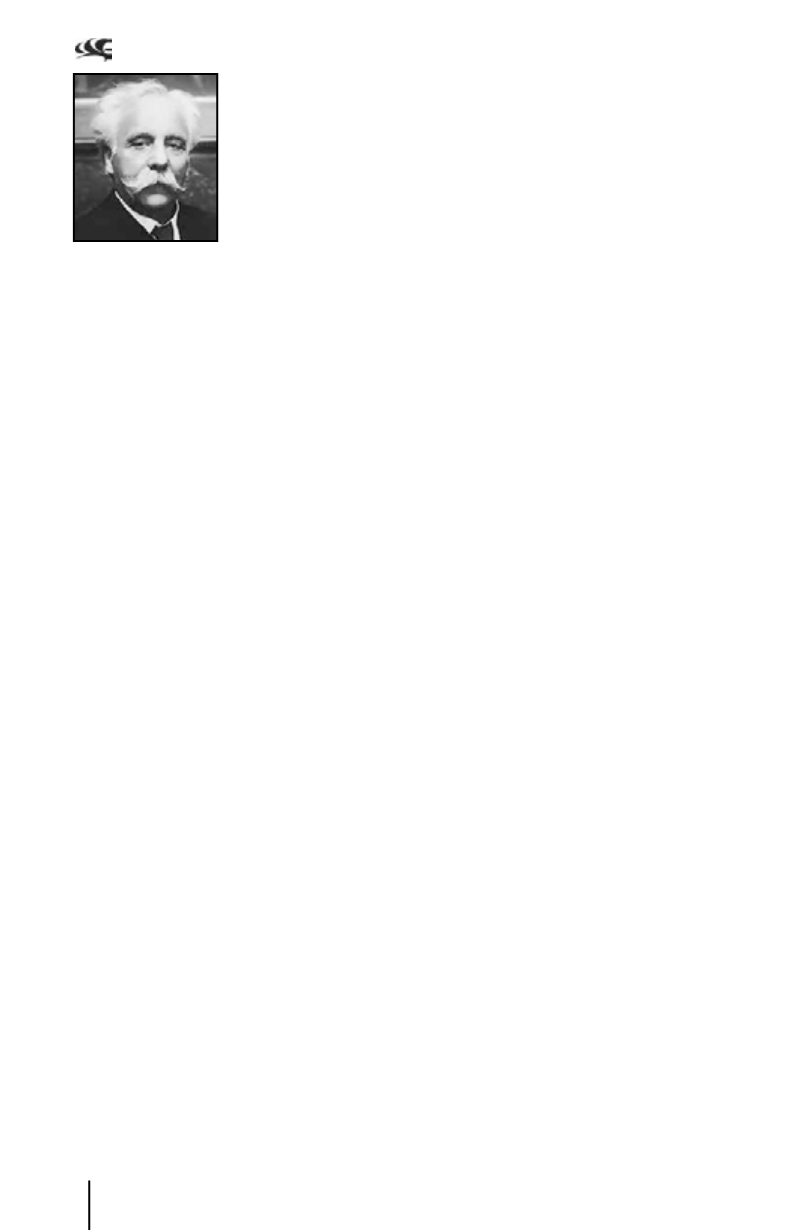
A28 2013 Program Notes, Book 1
Suite from the Incidental Music to
Maeterlinck’s
Pelléas et Mélisande
,
Op. 80 (1898)
Gabriel Fauré (1845-1924)
Pelléas et Mélisande is scored for woodwinds in pairs, four horns,
two trumpets, timpani, harp and strings. Performance time is
eighteen minutes. The Grant Park Orchestra first performed this
Suite on August 7, 1968, with Irwin Hoffman conducting.
Gabriel Fauré was one of the great figures of French music at the turn of the
twentieth century. A student of Saint-Saëns, a master organist, the teacher of Ravel,
Enesco, Koechlin and Nadia Boulanger, director of the Paris Conservatoire, and a
composer of immense skill and refinement, Fauré was best suited to composing in the
small forms of song and chamber music. Among the most successful of his handful
of works for orchestra is the beautiful Suite that he drew from his incidental music to
Maeterlinck’s symbolist play, Pelléas et Mélisande, which he created for a production
of the drama at the Prince of Wales Theatre, London in 1898. (Fauré generally disliked
writing for large ensembles and often entrusted his most talented students with the
orchestration of his pieces. Charles Koechlin was assigned the original theatrical
version of Pelléas; Fauré based his 1901 suite upon the orchestration of his pupil.)
This haunting and haunted drama, which premiered in Paris in 1893, embodied
the Symbolists’ philosophy that mood is more important than plot. Robert Layton
summarized the drama’s plot: “Pelléas is set in mythical Allemonde, the protagonists
in the drama remain shadowy and we are left knowing little or nothing of their
background. Prince Golaud out riding one day discovers Mélisande, weeping and lost
in the forest, and takes her under his protection. Maeterlinck’s play charts her growing
infatuation for his younger half-brother, Pelléas, and Golaud’s ensuing jealousy.” The
play inspired incidental music from Jean Sibelius for a 1905 production in Helsinki (in
Finnish!), a concert overture from Cyril Scott in 1912, and a vast symphonic poem from
Arnold Schoenberg in 1903. It also proved to be the perfect subject for the wispy,
Impressionistic idiom of Debussy and was equally well suited to the art of Fauré,
whose incidental music preceded Debussy’s opera by four years.
The Prélude was intended to be played before the curtain rises on Pelléas
to evoke the play’s aura of melancholy and mystery. There is a meditative quality
about this music, a deep stillness that rises only briefly to peaks of tension before
again subsiding. The horn-calls near the end invest the music with a suggestion of
the antique, sylvan setting of the drama. The second movement (Fileuse) depicts
Mélisande at her spinning wheel. The whirring of the wheel is portrayed by the steady
rhythmic filigree in the strings, which serves as background for the heroine’s plaintive
song, intoned by the oboe. The third movement, Sicilienne, is one of Fauré’s most
famous inspirations, though it was not originally composed for the incidental music for
the play. Pressed for time during his preparations for the opening night of the London
Pelléas, the composer borrowed this work from a chamber piece first written for cello
and piano. In the London production, its quality of bittersweet nostalgia was used to
underline the touching love scene between Pelléas and Mélisande. The finale, The
Death of Mélisande, is a mournful elegy of quiet intensity.
Friday, June 21 and Saturday, June 22, 2013


